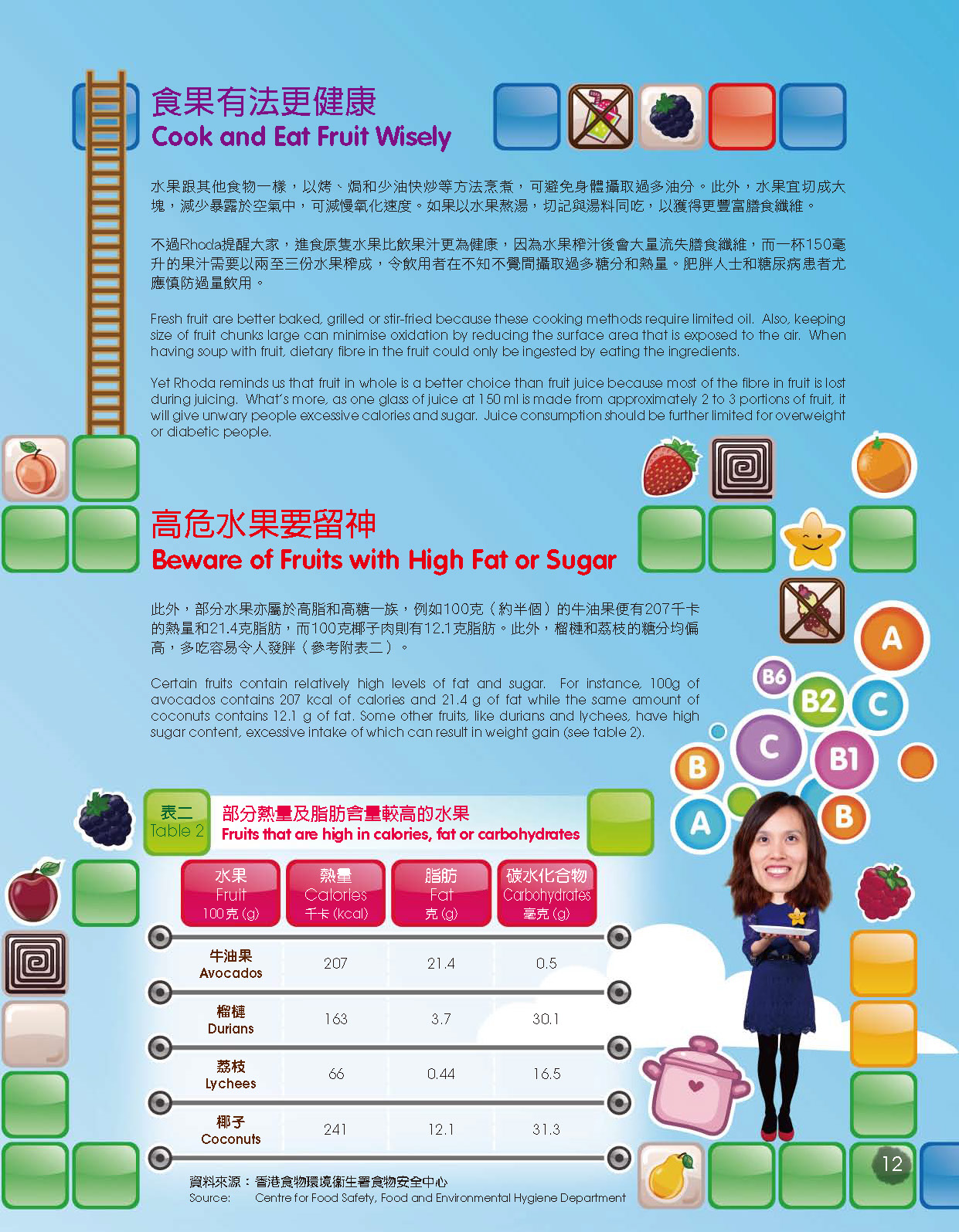CookSmart (16th Issue) Page31

|
Dietitian Guide
Cook and Eat Fruit WiselyFresh fruit are better baked, grilled or stir-fried because these cooking methods require limited oil. Also, keeping size of fruit chunks large can minimise oxidation by reducing the surface area that is exposed to the air. When having soup with fruit, dietary fibre in the fruit could only be ingested by eating the ingredients. Yet Rhoda reminds us that fruit in whole is a better choice than fruit juice because most of the fibre in fruit is lost during juicing. What’s more, as one glass of juice at 150 ml is made from approximately 2 to 3 portions of fruit, it will give unwary people excessive calories and sugar. Juice consumption should be further limited for overweight or diabetic people.
Beware of Fruits with High Fat or SugarCertain fruits contain relatively high levels of fat and sugar. For instance, 100g of avocados contains 207 kcal of calories and 21.4 g of fat while the same amount of coconuts contains 12.1 g of fat. Some other fruits, like durians and lychees, have high sugar content, excessive intake of which can result in weight gain (see table 2).
Table 2 Fruits that are high in calories, fat or carbohydrates
Source: Centre for Food Safety, Food and Environmental Hygiene Department |
Prev | 1 2 3 4 5 6 7 8 9 10 11 12 13 14 15 16 17 18 19 20 21 22 23 24 25 26 27 28 29 30 31 32 33 34 35 36 37 38 39 40 | Next